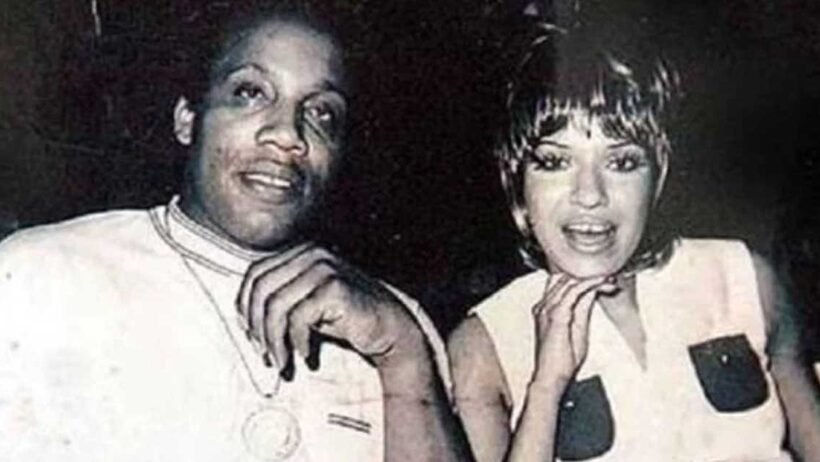When people hear the name Julie Farrait, most immediately think of her connection to Frank Lucas, the infamous Harlem drug lord whose story captivated audiences in the movie “American Gangster.” But Julie’s own story runs much deeper than her role as a kingpin’s wife. Her life reads like a dramatic novel – filled with romance, wealth, betrayal, and ultimately, the harsh realities of choices that echo through generations.
From her modest beginnings in Puerto Rico to the heights of criminal luxury in New York, Julie Farrait’s journey reveals the complex human emotions behind one of America’s most notorious drug empires. This is her story – unvarnished and complete.
Early Life in Puerto Rico: From Humble Beginnings to Beauty Queen
Picture Puerto Rico in the early 1940s. Julie Farrait was born into this world around 1941, in San Juan, where palm trees swayed against a backdrop of economic uncertainty. Her family wasn’t wealthy by any stretch of the imagination. Like many Puerto Rican families of that era, they worked hard just to make ends meet.
Yet even as a young woman, Julie possessed something special. Her natural beauty and charm didn’t go unnoticed in her community. She eventually earned the title of homecoming queen – a fact that Hollywood would later embellish, incorrectly portraying her as Miss Puerto Rico in the film adaptation of her husband’s life.
The 1950s and 60s were tough times for many Puerto Ricans. Jobs were scarce, opportunities limited. So when Julie made the decision to leave her island home for the mainland United States, she was following a path taken by thousands of her compatriots. None of them could have predicted where that path would lead.
A Fateful Meeting: How Julie Farrait Met Frank Lucas
Sometimes life changes in an instant. For Julie, that moment came during what should have been an ordinary flight from Puerto Rico to New York sometime in the 1960s. Seated somewhere on that aircraft was Frank Lucas – a man whose confidence radiated from across the aisle.
Frank himself later recalled their first encounter with obvious fondness. “Cute girl, too,” he wrote in his autobiography. “Every time I turned around to check her out, she was smiling at me. I didn’t need any more of a hint.” The attraction was immediate and mutual.
Julie, for her part, was completely taken by Frank’s self-assurance. “The first time I met Frank, I was completely taken back by his confidence and coolness,” she told the Village Voice years later. “He was a very self-assured man, which I found very attractive. And I still do.”
Their whirlwind romance moved quickly. By 1967, they were married, and Julie found herself stepping into a world she couldn’t have imagined back in Puerto Rico.
Life at the Top: The Glamorous Years of a Drug Empire
The late 1960s and early 1970s were intoxicating times for the Lucas family. As Frank built his heroin empire – importing his famous “Blue Magic” directly from Southeast Asia – Julie experienced wealth beyond most people’s wildest dreams. We’re talking about a lifestyle where Frank could boast of pulling in $1 million a day at the height of his operation.
But Frank wasn’t entirely satisfied with Julie’s simple, country-girl style. “I liked Julie, but she was a country girl,” he admitted in his autobiography. “There was nothing fabulous about her. Her clothes were boring and basic and not good quality. I had to get her fixed up so she could look the part of Frank Lucas’s wife.”
And fix her up he did. Julie transformed herself into the picture of elegance and sophistication. She developed an eye for fashion that matched their extravagant lifestyle – expensive cars, designer clothes, lavish parties where money flowed like water.
The most infamous symbol of their wealth became Frank’s chinchilla coat and matching hat. The coat alone reportedly cost $100,000, with the hat adding another $25,000 to the bill. When Frank wore this outfit to a Muhammad Ali boxing match in Atlanta in 1970, it created a spectacle that law enforcement wouldn’t forget. That single moment of showing off would eventually contribute to their downfall.
Living at the top of the drug world meant constant danger lurked beneath the surface. Julie knew their wealth came from illegal activities, but the lifestyle was seductive. The couple lived like royalty, but royalty with targets on their backs.
The Fall from Grace: Arrests and Legal Troubles
All empires eventually crumble, and the Lucas empire was no exception. In 1975, federal agents came knocking at their New Jersey home with search warrants and handcuffs. The raid was swift and thorough – agents seized more than $500,000 in cash and arrested both Frank and Julie.
During the chaos of the raid, Julie made desperate attempts to protect their assets. Witnesses reported seeing her throwing suitcases filled with money out of bathroom windows. In perhaps the most heartbreaking detail, she even stuffed currency into their young daughter Francine’s clothing, hoping to save something from the wreckage.
These actions, born of panic and desperation, only made things worse for Julie legally. Frank received a crushing 40-year sentence, while Julie was handed five years for her role in the operation. The woman who had once worn designer gowns to exclusive parties now faced the prospect of prison uniforms and concrete cells.
Struggling for Redemption: Life After Prison
Prison changes people, and Julie’s five-year sentence gave her plenty of time to reflect on the choices that had brought her there. When she was finally released, the world looked very different. The luxury was gone, Frank was still behind bars, and she had children to care for with limited resources.
Initially, Julie and Frank lived separately after their releases. The strain of their legal troubles had taken its toll on their relationship. Julie took their daughter Francine to Puerto Rico, where they lived with her parents while she tried to build a legitimate life.
The adjustment was brutal. Going from a lifestyle where money was no object to scraping by on limited means tested Julie’s resilience. When Frank was eventually released and they reunited in New Jersey, old temptations proved difficult to resist.
Unfortunately, Frank’s return to drug dealing created new tensions for the family. Julie found herself once again living in the shadow of criminal activity, despite her efforts to stay clean.
History Repeats: The 2010 Cocaine Trafficking Case
You’d think that spending five years in prison would be enough to keep someone away from drugs forever. But addiction to the lifestyle – the money, the power, the excitement – can be just as strong as addiction to substances themselves.
In 2010, at age 69, Julie found herself in handcuffs again. This time, federal agents arrested her at a hotel in Puerto Rico’s Isla Verde area for attempting to sell two kilograms of cocaine to an undercover officer. The arrest was the culmination of a federal investigation that had been monitoring her activities since February 2009.
The evidence against her was damning. Recorded conversations revealed Julie discussing not only the drugs she had with her, but also mentioning another suspect who had an additional eight kilograms available for potential buyers.
When she appeared in Manhattan federal court in February 2012, Julie made an emotional plea to Judge Laura Taylor. “I want to apologize to my husband… My husband is 81 years old, and I would like to spend what time he has with him,” she said, asking for mercy so she could care for Frank in his declining years.
The judge sentenced her to five years in prison anyway. Julie was 71 years old.
Family Legacy: The Impact on Her Children
Perhaps the most tragic aspect of Julie’s story is how it affected her children, particularly her daughter Francine Lucas-Sinclair. Francine was only three years old during the 1975 raid – old enough to be traumatized by the experience, but too young to understand what was happening.
The little girl who had currency stuffed in her clothes during a federal raid grew up to become an advocate for children in similar situations. In 1977, Francine entered the witness protection program with her father, an experience that brought instability and fear into her young life.
But Francine refused to let her parents’ choices define her future. As an adult, she founded “Yellow Brick Road,” a website and organization that provides resources to children who have parents in prison. Her work helps these children understand they’re not alone and that their parents’ mistakes don’t have to become their own.
Francine’s transformation from a traumatized child of criminals into an advocate for others shows the possibility of breaking cycles of crime and incarceration. Her work stands as perhaps the most positive legacy to emerge from the Lucas family story.
Cultural Impact: Julie Farrait in Popular Media
Julie’s story reached millions of people through Ridley Scott’s 2007 film “American Gangster,” starring Denzel Washington as Frank Lucas. Puerto Rican actress Lymari Nadal portrayed a character named “Eva,” who was partially inspired by Julie’s life and experiences.
However, Hollywood being Hollywood, the film took significant liberties with the facts. The most notable change was portraying Julie as a former Miss Puerto Rico rather than the homecoming queen she actually was. This fictional enhancement has led to persistent misconceptions about her background.
The movie’s success brought renewed public interest in Julie’s story, though it often focused more on the glamorous aspects rather than the human costs of involvement in the drug trade. The film’s portrayal emphasized the romance and luxury while glossing over the devastating impact on families and communities.
Final Years and Reflection: A Life of Complexity
Julie Farrait’s final years were marked by continued legal troubles and the challenges of maintaining relationships damaged by decades of criminal activity. Her 2012 imprisonment meant she spent her seventies behind bars, a far cry from the luxury she had once known.
The exact details of Julie’s death remain private, but reports indicate she passed away before her husband Frank, who died in 2019. After a lifetime in the public eye due to their criminal activities, the family chose to keep her final chapter away from media attention.
Looking back at Julie’s life, it’s easy to see it as a cautionary tale about the seductive nature of easy money and criminal wealth. Her journey from a simple Puerto Rican homecoming queen to the wife of one of America’s most notorious drug lords illustrates how love, loyalty, and circumstances can lead people down paths they never intended to travel.
But Julie’s story is also about the lasting consequences of choices – not just for the people who make them, but for their children and grandchildren. The trauma experienced by Francine and her siblings shows how criminal activity creates ripple effects that extend far beyond the immediate participants.
Perhaps most importantly, Julie’s legacy lives on through her daughter’s advocacy work. Francine’s “Yellow Brick Road” organization demonstrates that even from the darkest circumstances, positive change remains possible. It’s a reminder that while we can’t always control what happens to us, we can choose how we respond to those experiences.
Julie Farrait’s life was undeniably complex – filled with love and betrayal, luxury and loss, loyalty and consequences. Her story serves as both a warning about the costs of criminal involvement and a testament to the possibility of redemption, even when it comes through the next generation rather than our own choices.








